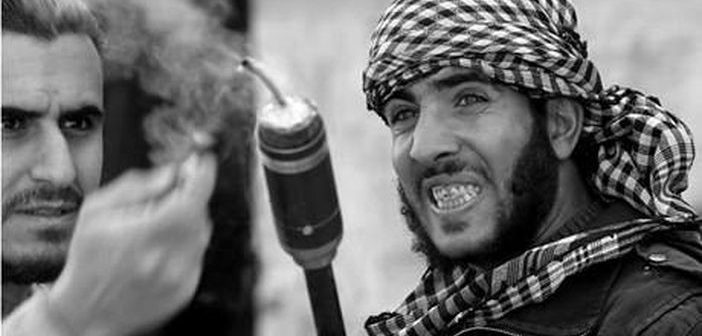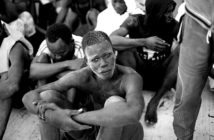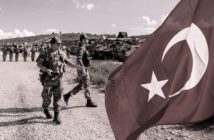The Syrian rebels are at it again. Compensating for their losses in Aleppo, they have once again decided to concentrate their energy to fight each other – and not Bashar al-Assad’s army.
This has happened numerous times before. During the failed second offensive of Aleppo in 2016 aiming to break the siege, a simultaneous attack was launched to seize territory near the central city of Hama from the regime and stretch government forces thin. After notable successes, the attack on Hama was finally stalled at the outskirts of the city when infighting broke out to settle the question of who should control the newly occupied land. Needless to say, that by the time the IS-linked Liwa (Jund) al-Aqsa group rose to the top among the rebel factions, the regime regrouped, recovered all the lost land and could eventually regroup enough troops to take Aleppo.
While it is true that the majority of rebel infighting has been a pleasant surprise for Bashar al-Assad, lately it has also led to more unity in the insurgency.
The myriad of rebel groups is financed by different actors. The USA, Saudi-Arabia, Qatar and Turkey can all manipulate their proxies by cutting off, or increase support, which at times results in tensions on the ground and the seizure of armament stockpiles. However, during January and February of this year, it was not one of their external allies that influenced the rebels to turn against each other, but the most powerful enemy. Russia’s foxy diplomacy in the Astana peace talks has shunned American and Gulf influence, and has succeeded in creating frictions between the rebel forces on the ground, much to the delight of Bashar al-Assad and his supporters.
As in every peace negotiation so far, Astana also had important attending and absentee members. Organized by Turkey and Russia, the meeting included Syrian and Iranian government representatives but Saudi-Arabia, USA and Qatar were not present. On the rebel side, two major groupings accepted the invitation much to the dismay of other more hard-core Islamists like Jabhat al-Nusra, recently renamed to Jabhat Fateh al-Sham (JfS) and Liwa al-Aqsa.
Among the invitees to Kazakhstan were the Western-backed Southern Front, present in the southern region of the country, and Jaish al-Islam, which has during the past months lost notable ground in Ghouta near Damascus. Both were tacitly backed by Ahrar al-Sham, which is one of the most important rebel faction, ally of Saudi-Arabia, and designated as “moderate” (previously “terrorist”) by Russia, moments before the Astana peace-negotiation.
In the northern Idlib province, tensions between Jabhat Fateh al-Sham, Liwa al-Aqsa and Ahrar al-Sham have flared up during the past year, at times between all three of them, and occasionally against the latter. With Russia designating Ahrar al-Sham as legitimate opposition, and more importantly, the group accepting this notion, the two other powerful organisations (IS-linked Liwa al-Aqsa, and Al-Qaeda-linked JfS) could not stay idle. Feeling that momentum was taken away from them, and fearing that Turkey and Russia along with their allies on the ground would escalate the fight against them, they decided to go on the offensive.
In January, Jabhat Fateh al-Sham diverted their forces from the siege they had been imposing on the two Shiite villages of al-Fuah and Kafraya (home to several thousand citizens) to attack local Free Syrian Army bodies and allies of Ahrar al-Sham. The group Nour al-Din Zinki, which became famous last year for executing a twelve-year-old boy on camera also joined the extremist factions. Timely execution of children has unfortunately become a norm during this civil war, but this group has also received anti-tank missiles by the USA, and was at one point vetted as a “moderate opposition” ally…
The outcome of the week-long clashes between the opposed was more unity for the rebels. Several less powerful groups, but close to Ahrar al-Sham decided to unite for protection, with the most important being Jaish al-Islam (although their Damascus front remained independent). The mergers, the fighting and dissolution of rebel groups all took place in the north of the country, in Lattakia, Aleppo and Idlib provinces. It rendered Ahrar al-Sham more powerful than ever before, adding about 8.000 soldiers.
The reaction of the extremist factions on Ahrar al-Sham’s growing influence was a fusion of their own. Jabhat Fateh al-Sham, Nour al-Din Zinki along with three other factions regrouped under a new organisation called Hayat Tahrir al-Sham, abbreviated to HTS. Surprisingly, this faction isn’t led by the powerful JfS but recently defected conservative Ahrar al-Sham members. The goal was to play down the al-Qaeda links of JfS, so to avoid being targeted by coalition airstrikes. Nevertheless, HTS is a clearly sectarian organisation, with their leader Abu Jaber stating that “the enemy is Shi’ism”.
Boiled down, the dynamics in the northern part of Syria has seen the emergence of two rebranded powerful rebel coalitions/groups with Tahrir al-Sham (HTS) and Ahrar al-Sham. Left out by them is the IS-linked Liwa al-Aqsa and some smaller units operating near Idlib, Aleppo and Hama. Although further conflict between these groups is predictable in the future, they don’t shy away from fighting together in the battlefield. Just in February, HTS, Ahrar al-Sham and parts of the Southern Front, launched a coordinated attack on the regime-held district in Dara’a near the Jordanian border. This front has been calm for many months because of the freezing of western support for the rebels situated there. Without external backing, the offensive stalled after a few days, but the apparition of suicide car bombings showed that extremist factions are operating on a wider scale than before. Furthermore, the Islamic State jumped in, and launched an attack on local Free Syrian Army groups and captured several villages from them.
A grand merger between HTS and Ahrar al-Sham remains unlikely, but coordination between these two large coalitions is facilitated with the recent developments. Inside the HTS, the Jabhat Fateh al-Sham leadership will continue to be targeted by coalition airstrikes, and it is unlikely that they can do anything about it. Russian and Syrian forces will equally target anyone opposing them, and as predicted, the Astana peace talks have just been for show – the war will continue as before.
Bashar al-Assad, doesn’t have to worry about the mergers just yet, but if the newly formed groups are given breathing space, they might just be able to launch a vast coordinated offensive, similar to the one in 2015 when they captured the town of Idlib.
Unity among all the Syrian rebels is closer than ever before, but this dynamic seems to be an act of desperation – which might just be what they need to turn the tide.





